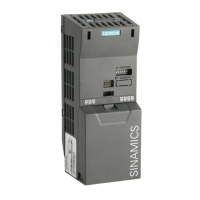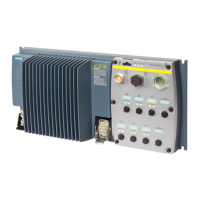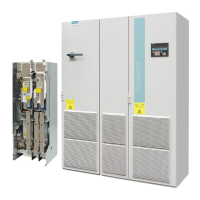Communication
6.6 Communication via USS
Control Units CU240S
Operating Instructions, 07/2008 - FW 3.2, A5E00766042B AD
183
Character delay time timeout between characters and must be smaller than 2 time the
character run time but can be zero
Start delay timeout between USS messages. Must be > 2
*
character run time
Response delay Processing time of the slave. Must be < 20 ms, but larger than the
start delay!
Residual run time < 1.5
*
(n + 3)
*
character run time (where n = number of data bytes)
"Slave
Transmitting"/
"Master
Transmitting"
is the sum of "Start delay", "Response delay" and "Residual run
time"
The master must check the following times:
• "Response delay"
= reaction time of slave to USS request
• "Residual run time"
= transmission time of response telegram sent by slave
The slave must check the following times:
• "Start delay"
= timeout between USS messages
• "Residual run time"
= transmission time of request telegram coming from master
: : :
: : :
: : :
QFUW
67; /*( $'5 Q %&&
67; /*( $'5
%&&
FUW FUW
FUW
0DVWHU5HTXHVW
6ODYH5HVSRQVH
6WDUW'HOD\
5HVSRQVH'HOD\
Figure 6-21 Timeout Checks on USS Slave
The timeout margins that are verified on the USS slave are shown in the figure above. "crt"
stands for "character run time". The factor "1.5" is the maximum margin. The "start delay"
and the minimum "response delay" are fixed minimum values in software. The "residual run
times" are monitoring values that cause a timeout if they are exceeded by the character
reception.

